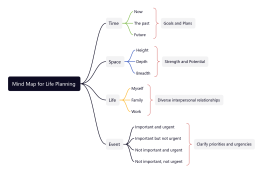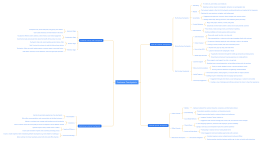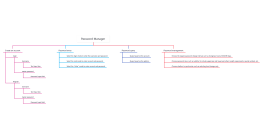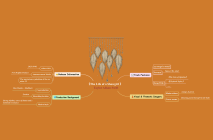
History of Canada Mind Map
1 Report
This mind map serves as a comprehensive overview of the 'History of Canada,' tracing the nation's journey from the era of Indigenous Peoples to the modern era. It begins with the rich cultural tapestry of First Nations, Inuit, and Métis communities, and progresses through European exploration by figures like John Cabot and Jacques Cartier. The colonial era saw French and British influences vying for control, culminating in British dominance post-Seven Years' War. The path to Confederation, expansion, and nation-building is highlighted, alongside pivotal events like the World Wars. The map concludes with modern challenges, including Indigenous reconciliation and climate change.
Related Recommendations
Other works by the author
Outline/Content
See more
Indigenous Peoples (Pre-Contact)
First Nations
Over 600 distinct First Nations, each with its own language, culture, and territory.
Communities developed advanced systems of governance, trade, and spirituality.
Inuit
Inhabited Arctic regions, relying on hunting and fishing for survival.
Skilled in building tools, shelters (e.g., igloos), and adapting to harsh climates.
Métis
Developed later as a distinct cultural group, blending Indigenous and European ancestry.
European Exploration (Late 15th–17th Century)
Viking Exploration
Norse settlers established a short-lived settlement at L'Anse aux Meadows around 1000 AD.
John Cabot (1497)
Explored Newfoundland under the commission of England.
Jacques Cartier (1534)
Claimed the St. Lawrence River region for France.
Interacted with the Iroquoian peoples.
Colonial Era (17th–18th Century)
French Colonization
Established New France, with Quebec City founded in 1608 by Samuel de Champlain.
Economy driven by fur trade and relations with Indigenous peoples.
British Colonization
Took control of Newfoundland and parts of Nova Scotia in early colonial efforts.
Conflict with France led to shifting territories and alliances.
Seven Years' War (1756–1763)
Ended with the Treaty of Paris, transferring control of New France to Britain.
Marked the beginning of British dominance in Canada.
British Rule and Confederation (1763–1867)
Quebec Act (1774)
Guaranteed religious and cultural rights for French-speaking Catholics.
American Revolution and Loyalists
United Empire Loyalists fled to Canada after the American Revolution (1775–1783).
Led to the creation of new settlements in Ontario and the Maritimes.
War of 1812
Fought between the United States and Britain; Canadian territories were a key battleground.
Steps Toward Confederation
1850s: Economic and political pressures encouraged unification of British North American colonies.
1867: The British North America Act established the Dominion of Canada.
Expansion and Nation-Building (1867–1914)
Addition of Provinces and Territories
Manitoba (1870), British Columbia (1871), and Prince Edward Island (1873) joined Confederation.
Northwest Territories acquired, leading to disputes with Indigenous groups.
Canadian Pacific Railway (1881–1885)
Unified the country by connecting eastern and western regions.
Enabled settlement and economic development in the prairies.
Indigenous Relations
Treaties negotiated, often under unfair terms, to access Indigenous lands.
Residential schools established to assimilate Indigenous children, leading to cultural and personal harm.
World Wars and Interwar Period (1914–1945)
World War I
Canada contributed significantly to Allied efforts, particularly at battles like Vimy Ridge.
1917: Women gained the right to vote in federal elections (initially for those with relatives in the military).
Great Depression (1929–1939)
Severe economic downturn caused unemployment and hardship across the country.
World War II
Canada played a vital role in the Allied victory, providing troops, supplies, and manufacturing.
1949: Newfoundland joined Canada as the 10th province.
Modern Era (1945–Present)
Post-War Prosperity
Expansion of the welfare state, including universal healthcare and education reforms.
Economic growth fueled by natural resources and manufacturing.
Indigenous Rights and Reconciliation
1960: Indigenous peoples gained the right to vote without losing treaty rights.
Ongoing efforts to address the legacy of residential schools and land disputes.
Quebec Nationalism
1960s–1980s: Rise of separatist movements, including the FLQ crisis and referenda on sovereignty.
Multiculturalism policies introduced to promote national unity.
21st Century Challenges
Climate change, Indigenous reconciliation, and addressing economic inequality.
Ongoing debates about Canada's identity and role on the global stage.

Collect

Collect

Collect

0 Comments
Next Page




